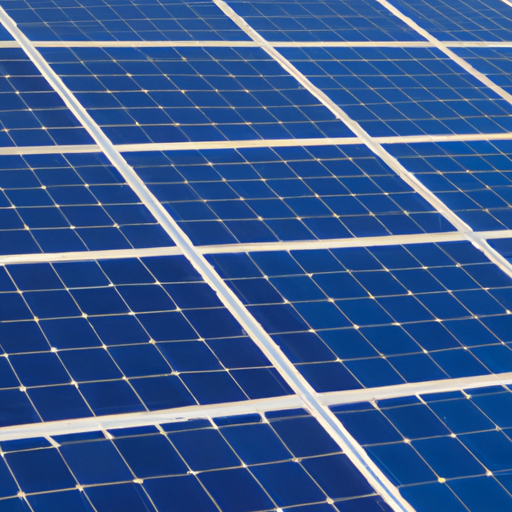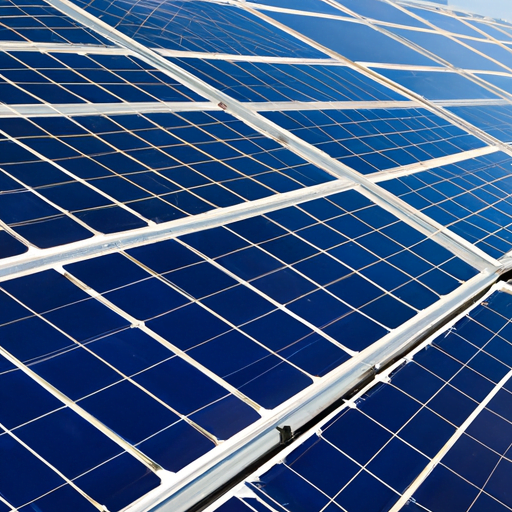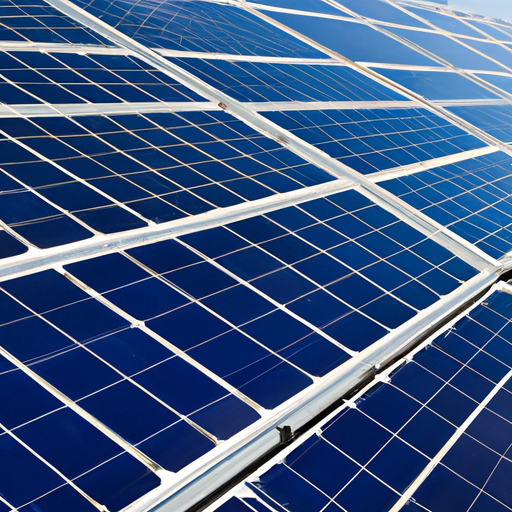Have you ever thought about living off the grid? It’s an exciting concept, but it also requires some careful planning and calculations. One of the most important considerations when setting up a solar power system is determining how many solar panels you need to generate the desired amount of energy. So, let’s dive into the topic and find out how many solar panels you would need for a 7000-watt system.
When it comes to solar panels, wattage is the unit of measurement for power output. A typical solar panel can generate around 250-300 watts. So, to calculate the number of panels needed for a 7000-watt system, you would divide 7000 by the wattage of each panel. For example, if each panel has a power output of 250 watts, you would need at least 28 panels to reach 7000 watts.
However, it’s important to consider additional factors that can affect power generation, such as the climate and weather conditions of your location, the efficiency of the panels, and even the angle at which the panels are installed. These factors can impact the amount of electricity generated and, in turn, the number of panels you would need. To learn more about this topic and to get a more accurate estimate for your specific situation, check out the complete article.

Understanding Solar Panel Efficiency
What is solar panel efficiency?
Solar panel efficiency refers to the ability of a solar panel to convert sunlight into usable electricity. It is an important factor to consider when determining the number of solar panels needed to generate a specific amount of power. Solar panel efficiency is usually expressed as a percentage, representing the amount of sunlight that is converted into electricity.
Factors affecting solar panel efficiency
Several factors can affect the efficiency of solar panels. The most common factors include:
Temperature: Solar panel efficiency tends to decrease as the temperature rises. It is important to consider the temperature in the location where the panels will be installed.
Shading: Shading can significantly impact the performance of solar panels. Even a small amount of shading on a panel can decrease its efficiency.
Dust and dirt: Accumulation of dust and dirt on solar panels can reduce their efficiency. Regular cleaning and maintenance are important to maximize their performance.
Calculating the required efficiency for 7000 watts
To calculate the required efficiency for generating 7000 watts of power, you need to determine the total wattage of solar panels needed based on their efficiency. Assuming you have a solar panel with an efficiency of 15%, the calculation would be as follows:
Required total wattage = 7000 watts / 0.15
Therefore, you would need a total wattage of 46,666.67 watts or 46.67 kilowatts (kW) of solar panels with an efficiency of 15% to generate 7000 watts of power.
Determining Daily Energy Consumption
What is daily energy consumption?
Daily energy consumption refers to the total amount of electricity consumed by your household on a daily basis. It is an important factor to consider when determining the number of solar panels needed to meet your energy requirements.
Identifying energy-consuming appliances
To calculate your daily energy consumption, you need to identify the energy-consuming appliances in your household. These can include lighting, heating and cooling systems, refrigerators, televisions, and other electronics.
Calculating daily energy consumption for 7000 watts
To calculate your daily energy consumption, you can use the following formula:
Daily energy consumption (kWh) = Power rating (kW) x Daily usage (hours)
Assuming you have a daily energy consumption of 20 kWh and you want to generate 7000 watts of power, you can determine your required solar panel capacity as follows:
Required solar panel capacity = Daily energy consumption (kWh) / Solar panel efficiency (kW)
Therefore, with a daily energy consumption of 20 kWh, you would need a solar panel capacity of 46.67 kW (calculated earlier) to generate 7000 watts of power.
Calculating Solar Panel Power Output
What is solar panel power output?
Solar panel power output refers to the amount of electricity generated by a solar panel. It is determined by the panel’s capacity and efficiency and is measured in watts.
Determining solar panel output based on capacity
To determine the solar panel output based on capacity, you can multiply the capacity of the solar panels by their efficiency. For example, if you have the 46.67 kW solar panel capacity calculated earlier with an efficiency of 15%, the output would be:
Solar panel output = Solar panel capacity (kW) x Efficiency
Solar panel output = 46.67 kW x 0.15 = 7.0 kW or 7000 watts
Therefore, with the calculated solar panel capacity, you would be able to generate the desired 7000 watts of power.
Factoring in Solar Panel Degradation
What is solar panel degradation?
Solar panel degradation refers to the gradual decrease in the performance of solar panels over time. Factors such as exposure to sunlight, temperature fluctuations, and environmental conditions can contribute to this degradation.
Calculating degradation rate
To calculate the degradation rate of solar panels, you can refer to the manufacturer’s specifications. The degradation rate is typically expressed as a percentage, representing the annual decrease in efficiency.
Assuming a degradation rate of 0.5% per year, the calculation for adjusting the solar panel power output for degradation would be:
Degraded solar panel output = Solar panel output x (1 – (Degradation rate / 100))
Degraded solar panel output = 7000 watts x (1 – (0.5 / 100)) = 6975 watts or 6.975 kW
Therefore, considering the degradation rate, the adjusted solar panel power output would be 6975 watts.

Considering Solar Panel Orientation and Tilt
Why is solar panel orientation and tilt important?
Solar panel orientation and tilt play a crucial role in maximizing their efficiency. Proper orientation ensures that the panels receive the maximum amount of sunlight throughout the day, while the tilt angle helps optimize their performance based on the geographical location.
Optimal orientation and tilt for maximum efficiency
In most regions, the optimal orientation for solar panels is facing south in the northern hemisphere and facing north in the southern hemisphere. The tilt angle can vary depending on the latitude of the location. To determine the optimal tilt angle, you can use online tools or consult a solar professional.
Calculating required solar panel quantity with orientation and tilt
To calculate the required solar panel quantity considering orientation and tilt, you can divide the adjusted solar panel power output (6975 watts) by the power output per panel. Assuming each solar panel has an output of 350 watts:
Required solar panel quantity = Adjusted solar panel power output / Power output per panel
Required solar panel quantity = 6975 watts / 350 watts = 19.93
Therefore, you would need approximately 20 solar panels to generate 7000 watts of power, considering orientation, tilt, and panel capacity.
Accounting for Weather and Climate
How does weather and climate affect solar panel efficiency?
Weather and climate conditions can significantly impact the efficiency of solar panels. Factors such as cloud cover, rainfall, and temperature variations can reduce the amount of sunlight reaching the panels, thereby affecting their power generation capacity.
Calculating energy production based on regional weather data
To calculate the energy production based on regional weather data, you can refer to historical averages or consult local meteorological records. These records can provide insights into the expected amount of sunlight and weather conditions throughout the year, allowing you to adjust your calculations accordingly.
Adjusting solar panel quantity for weather conditions
Based on the regional weather data, you can adjust the required solar panel quantity by considering the expected decrease in energy production. If, for example, the weather conditions result in a 10% decrease in power production, you would need to increase the number of solar panels accordingly.
Thus, while initially, you might have calculated the requirement as 20 solar panels, based on regional weather conditions, you might need to increase the quantity to compensate for the potential decrease in energy production.
Factoring in Battery Efficiency and Storage
Why is battery efficiency and storage important?
Battery efficiency and storage capacity are crucial considerations for off-grid living. Batteries store excess electricity generated by solar panels during the day, allowing you to use it during the night or when sunlight is limited. It is important to factor in battery efficiency and storage capacity to ensure a reliable power supply.
Calculating battery storage capacity for 7000 watts
To calculate the battery storage capacity needed for 7000 watts of power, you can divide the required power by the desired storage duration. Assuming you want to store enough power for one day:
Battery storage capacity = Required power / Storage duration
Battery storage capacity = 7000 watts / 24 hours = 291.67 watt-hours or 0.29167 kilowatt-hours (kWh)
Therefore, you would need a battery storage capacity of approximately 0.29167 kWh to store the desired 7000 watts of power for one day.
Adjusting solar panel quantity based on battery efficiency
To account for battery efficiency, you need to adjust the solar panel quantity accordingly. Batteries are not 100% efficient, and there are losses during the charging and discharging processes. Assuming a battery efficiency of 80%, you can calculate the adjusted solar panel quantity as follows:
Adjusted solar panel quantity = Required solar panel quantity / Battery efficiency
Adjusted solar panel quantity = 20 panels / 0.8 = 25 panels
Therefore, to accommodate for the efficiency of the battery, you would need approximately 25 solar panels.
Considerations for Available Roof Space
Evaluating available roof space for solar panels
The availability of roof space is an important consideration when determining the number of solar panels you can install. You need to evaluate the dimensions and orientation of your roof to estimate the maximum number of panels it can accommodate.
Determining solar panel quantity based on roof space limitations
Based on the available roof space and the physical dimensions of the solar panels, you can determine the maximum number of panels you can install. This calculation will help you ascertain if the space available is sufficient to meet your desired power generation capacity.
Adjusting solar panel quantity for roof space limitations
If your available roof space is limited, you may need to adjust the solar panel quantity accordingly. It is essential to find a balance between the number of panels you can install and the desired power generation capacity. In some cases, you may need to consider alternative installation locations or explore the use of more efficient solar panels.
Determining the Number of Panels for 7000 Watts
Combining all calculations to determine solar panel quantity
By combining all the calculations mentioned above, you can determine the required number of solar panels to generate 7000 watts of power. Taking into account solar panel efficiency, degradation, orientation and tilt, weather conditions, battery efficiency, storage, and available roof space, you can arrive at a more accurate estimate.
Finalizing the number of panels required for 7000 watts
Based on the calculations previously explained, you would need approximately 25 solar panels to generate the desired 7000 watts of power, considering all the factors discussed.
Conclusion
Summary of determining the required number of solar panels
Calculating the required number of solar panels for a specific power requirement involves several factors, including solar panel efficiency, daily energy consumption, power output, degradation, orientation and tilt, weather conditions, battery efficiency and storage, and available roof space. By considering all these factors, you can arrive at a more accurate estimate of the number of panels needed.
Benefits of accurate calculations for off-grid living
Accurate calculations can help ensure that your off-grid solar system meets your power requirements reliably. By determining the optimal number of solar panels, you can generate enough electricity to power your household while accounting for factors such as efficiency, degradation, weather conditions, and battery storage. This accuracy contributes to a more sustainable and efficient off-grid living experience.
By following the guidelines outlined in this article and seeking professional advice when needed, you can make informed decisions regarding the number of solar panels required for 7000 watts and enjoy the benefits of clean and renewable energy.




